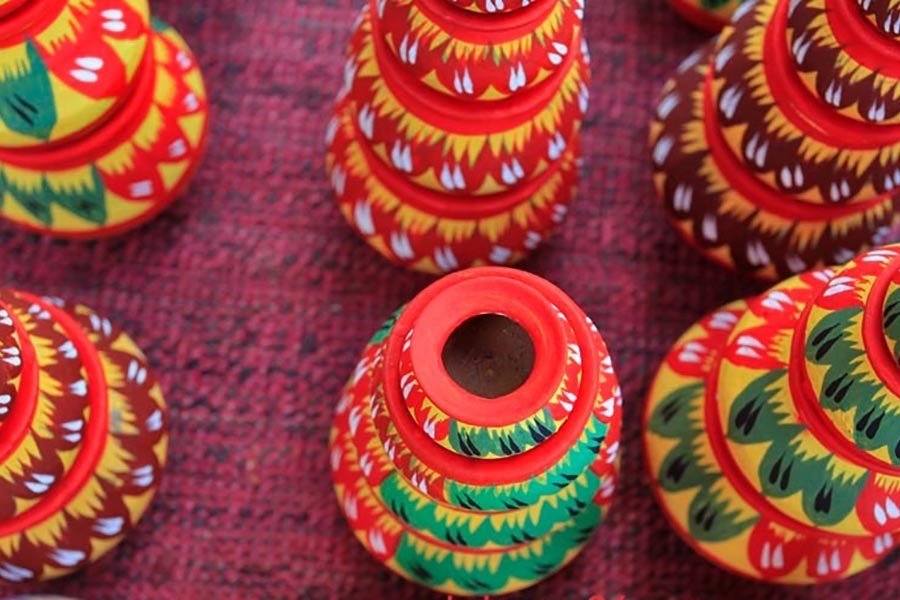The view of purely village-made handicraft being sold by vendors coming from areas as far as southwestern or northern districts has long become common in Dhaka. These hawkers walking along wide and small alleys in the capital sell all kinds of item. They range from winter cotton blanket 'nakshikantha', sliced cane-made mat, called 'shital pati', handloom saris to clay pots. Given their increasing rush to Dhaka, one might conclude that the market for the handmade or hand-woven products has largely shifted to the urban areas. The phenomenon is not limited to decorative pieces or fancy items.
Many food products, mainly those season-based, appear to have uprooted themselves from their centres of origin. 'Pithas' (rice-cakes) of all types are available these days in the large cities. Alongside upscale shops selling packets of raw or pre-cooked 'pithas', the roadside shops making 'pithas' on order and serving them hot --- fresh from the pans or pots, are a normal spectacle in today's Dhaka. Maybe, days are not far when people from villages on the outskirts will be found visiting Dhaka streets in search of their favourite 'pithas' long lost in the rural areas.
Let's turn to the items like 'nakshinantha'. In the earlier days, people from Dhaka or Chittagong would be seen making arduous trips to remote rural areas in order to buy a 'nakshikantha' or a 'shital pati'. Those days seem to be long gone. A decade ago, they used to be available at special fairs held in the capital. One could come across many rare items, normally available outside Dhaka, at these open-air fairs. Handmade products ranging from wooden kitchenware, embroidered dresses to intricately designed metal pieces --- and lots of other things are now within the reach of city residents. Some fairs are theme-based like the ones with focus on indigenous life. Nowadays, one need not travel to the hilly villages in deep forests to collect hand-woven clothes. These products, along with myriad types of objects of day-to-day use are showcased in these fairs. Many of the exclusive and traditionally expensive products from far-away areas of the country are available at the boutiques. The fixed-income middle-class people normally shun these glitzy shopping outlets. Of late, the original and genuine rural producers have begun coming up to their clients' doorsteps.
The urban customers are fast being spared the trouble of going on a hunt for the sellers of rare items at street corners. These hawkers sell 'nakshikanthas' in Dhaka's different types of neighbourhoods. Due to their hawking cries to attract customers and continuous walking, the job finally becomes highly exhausting. But in the end, it pays. Trading in uncommon items eventually emerges as profitable.
The earlier days of making long journeys to obscure parts of the country to buy an attractive fancy object appear to be over. They enjoy a number of advantages. In spite of their products' quality being similar to those sold at the upscale shops, their products are low-priced. Apart from the variety, they also sell uncommon products. This attracts discerning buyers.
Disheartening news is also there. Lately, there have been complaints that some dishonest traders in the capital make these 'kanthas' and other purely rural and raw products by employing unskilled craftspeople in their factories. The practice taints the innocence and good image of the vendors. This is how businesses with prospects die out in the big cities. It's only the unity of city-based craftspeople which can stem this tide of rot.


